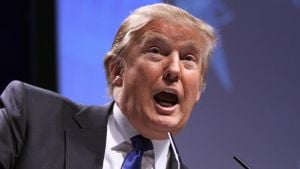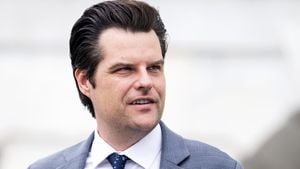The Australian government's recent proposal to ban minors from social media platforms has ignited both widespread support and considerable backlash. This initiative, which aims to restrict children from accessing platforms like TikTok, X (formerly Twitter), Facebook, and Instagram until they turn 16, has captured the attention of political leaders across the nation, garnering near-universal bipartisan support. Yet, the practical applications and potential ramifications of such legislation raise numerous concerns.
Prime Minister Anthony Albanese announced the plan on November 7, and the National Cabinet quickly endorsed it. This swift agreement among state and territory leaders indicates serious political momentum behind the proposal. Despite potential legislative hurdles, the politicians involved are committed to enacting this law within weeks. The proposal has already drawn enthusiastic support from many, including notable figures affected by the harrowing realities of social media.
One such advocate, Sonya Ryan, is driven by deep personal tragedy. Her daughter, Carly, was murdered by an individual who posed as a teenager on the internet, becoming one of the first victims of online predation in Australia. Ryan's advocacy for strict regulations on social media stems from the belief, backed by harrowing statistics, about the dangers children face online. This sentiment echoes across the wider community, spurring many to view the ban as not just necessary, but urgent.
Conversely, experts specializing in child welfare and technology have raised alarms about the blanket nature of the proposed ban. Over 140 professionals have signed open letters expressing their discontent with the age limitation, deeming it “too blunt” for effective risk management. Those in support of the ban highlight the need for more stringent oversight and protection for children online, particularly from harmful content and interactions. This dichotomy reflects the enormity of the challenge before lawmakers: finding the right balance between safeguarding children and recognizing their intrinsic need for connection and expression.
Leo Puglisi, a 17-year-old social media influencer and the founder of 6 News Australia, points out the disconnect between legislators and the realities of social media for today’s youth. “The government didn’t grow up surrounded by social media,” he reflects, emphasizing the entrenched role social platforms play within the lives of young people. Rather than outright bans, he advocates for improved digital literacy programs and resources aimed at teaching safe online behavior.
Adding to the complexity are concerns about how the ban would be enforced. The government has indicated it might rely on age estimation technologies or digital identification methods, raising privacy issues surrounding the protection of minors' data. Social media platforms would be tasked with verifying age compliance, thereby placing the burden on them rather than on children or their guardians. Critics, including Tama Leaver, professor of internet studies, worry about the implications of this approach—especially if platforms end up becoming the arbiters of user identity.
The legislation also provokes reflections on broader issues affecting youth. Some argue it overlooks the social benefits provided by digital connections, particularly for neurodiverse teens who find engagement through these platforms more accessible than face-to-face interactions. Organizations like UNICEF have voiced concerns about the potential alienation of specific youth demographics denied access to social media, emphasizing careful consideration of unintended consequences of such severe restrictions.
With proponents citing mental health risks associated with rampant social media usage, such as bullying and exposure to harmful content, the debate continues fervently. Many view the ban as a necessary response to the increase of digital threats children encounter. Yet, critics question whether removing the platforms entirely will merely result in greater feelings of isolation and disconnection among youths—particularly for those already struggling with mental health issues.
This situation mirrors the sentiments surrounding Internet censorship globally. Australia's proposed legislation stands as the first of its kind targeting minors within the established norms of democratic governance, fostering worry over governmental overreach. The rapid progression of this proposal, with minimal public debate or detailed justification, has led many to see it as the beginning of more extensive internet censorship.
Frustration also lies with the difficulty parents face as they grapple with balancing safety and freedom for their children. The prospect of having to monitor online activity constantly, or using methods to circumvent such bans (like VPNs) might strain families unsuited for such technical interventions. Parents want safety but also recognize the integral role social media plays in modern childhood.
Opponents of the proposed ban have colocated concerns about youth mental health with broader claims about state surveillance and censorship. Albanese’s administration has yet to present concrete evidence supporting the efficacy of the ban, prompting questions about its commitment to addressing child welfare effectively.
The discussion surrounding Australia's social media ban, informed by personal stories, expert opinions, and cultural criticisms, continues to challenge policymakers and citizens alike. With apprehensions about privacy, the importance of social engagement, and concerns on mental wellness at the forefront of this discourse, stakeholders from parents to policymakers must navigate these waters cautiously. Young people are not only potential victims of online threats but also vibrant participants and organizers seeking to carve out their social spaces within digital communities.
With no easy answers, stakeholders look forward to discussions about possible frameworks and guidelines for implementing social media policies. Parents, educators, and experts advocate for solutions centered on education, community engagement, and fostering safe online environments rather than rigid bans devoid of nuance. The road ahead demands collaboration, consideration, and, most of all, open dialogue aimed at preserving the rights and well-being of Australia’s youth.



